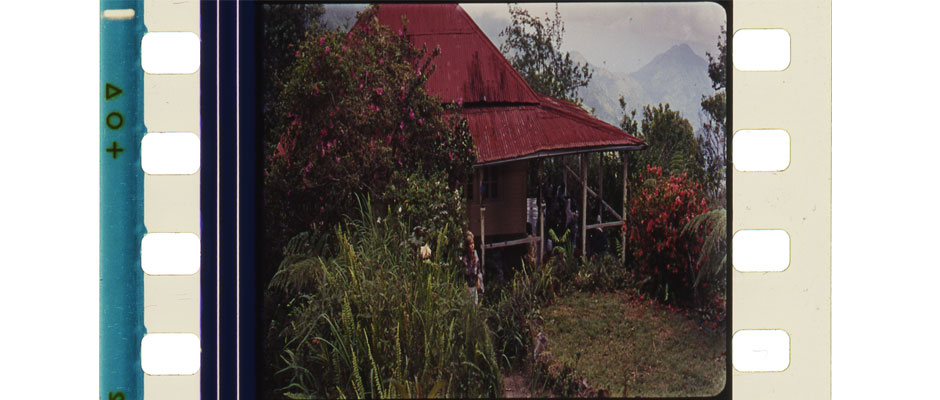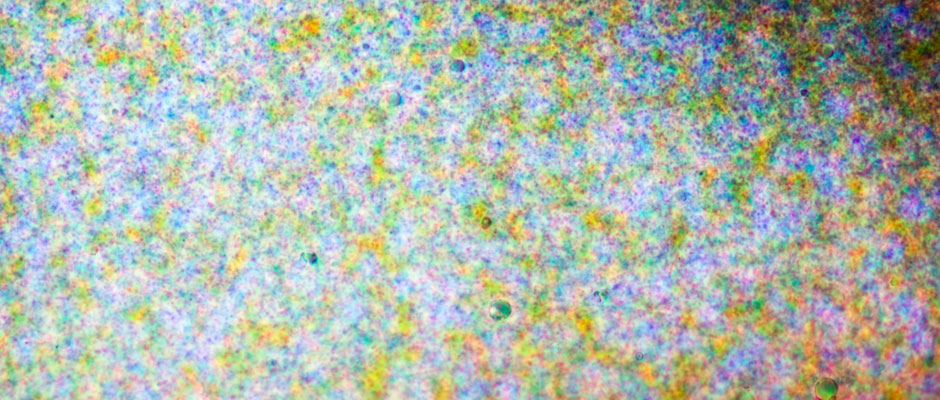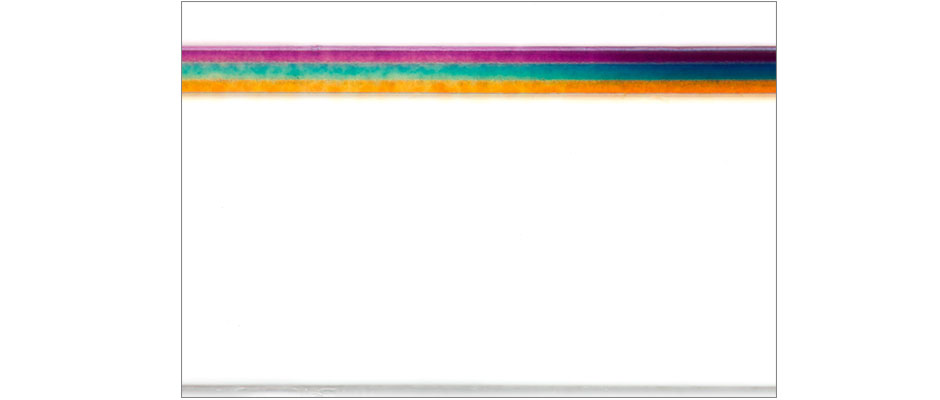


35mm print on cellulose acetate support

Dye clouds form the image.

The magenta dye layer is on top, followed by the cyan and yellow layers.
Process DescriptionA positive print film with three color-sensitive emulsion layers coated on a single support, widely used in professional film production. Images are reproduced subtractively in three light-sensitive emulsion layers with the use of incorporated dye couplers. Chromogenic prints can be made from either color negatives or black-and-white separation negatives. Chromogenic positive emulsions lack the characteristic orange masking of chromogenic negatives because the dye couplers in each emulsion layer are transparent. Chromogenic negative/positive process films were first developed by Agfa in the late 1930s and early 1940s. They were widely adopted in the United States in the early 1950s, when Kodak introduced Eastman Color. Other chromogenic processes were marketed under trade names including Ansco Color, Fujicolor, and Ferrania Color. |
|